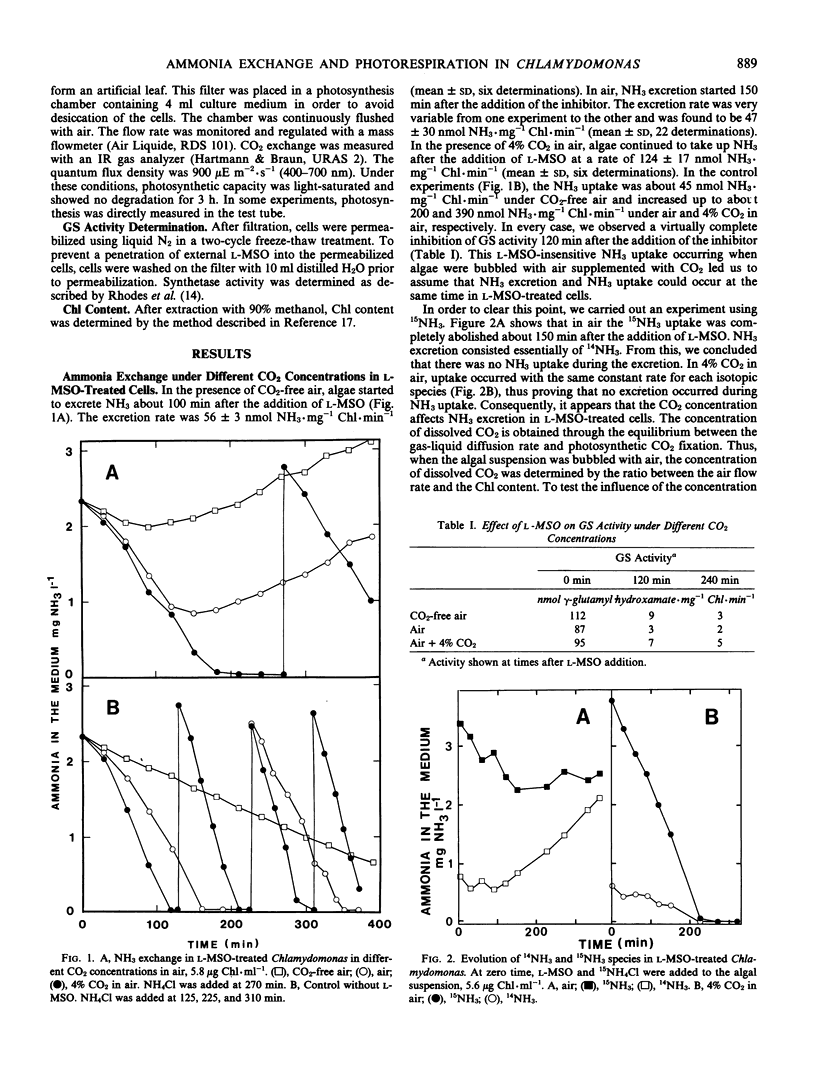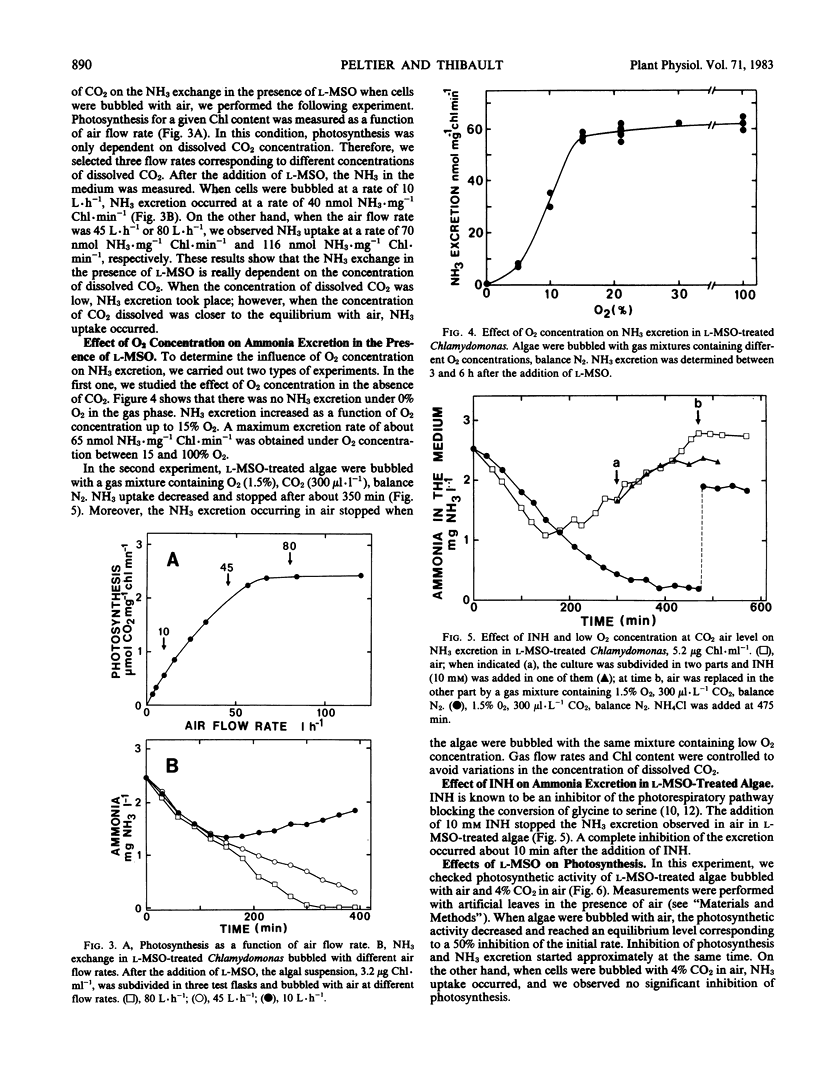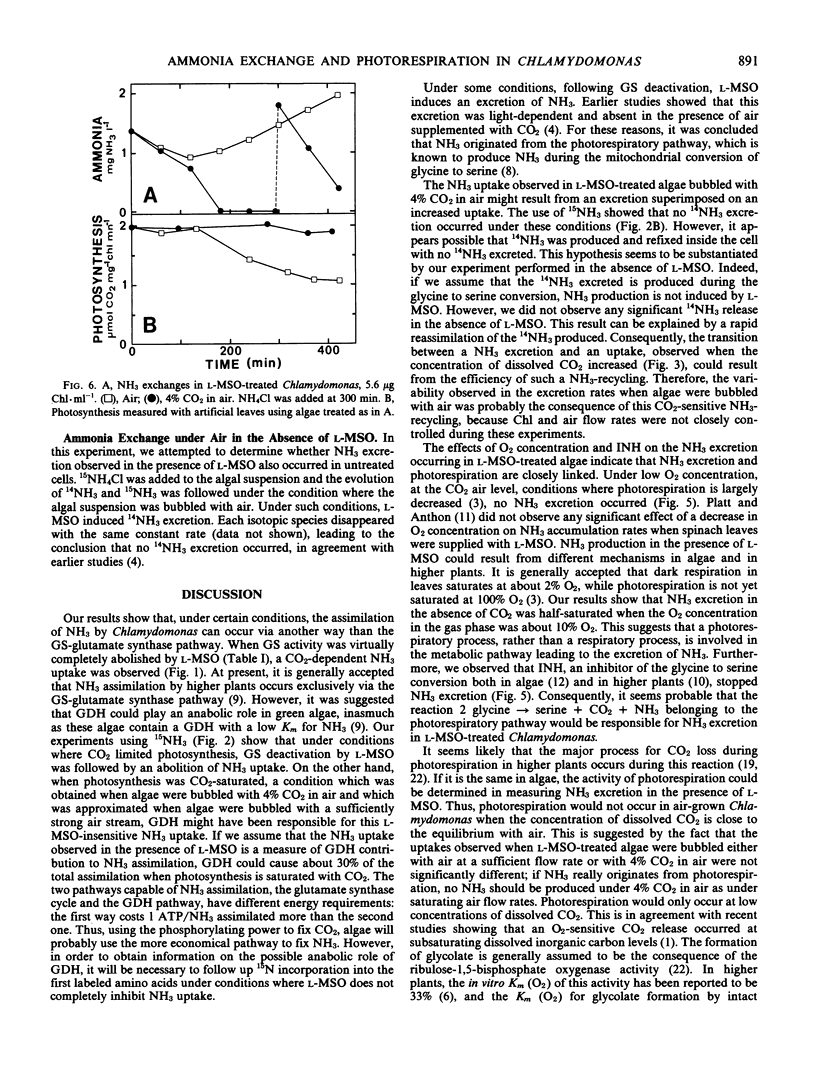Abstract
Two hours after the addition of l-methionine-dl-sulfoximine to the cell suspension, glutamine synthetase activity was inhibited by more than 90% in air-grown Chlamydomonas reinhardii. Cells continued to take up NH3 from the medium provided that the concentration of dissolved CO2 was high (equilibrated with 4% CO2 in air). This NH3 uptake, about 30% of the control, is discussed in terms of glutamate dehydrogenase activity. Without CO2, or with a low CO2 level, a NH3 excretion was observed, the rate of which depended on the actual concentration of the dissolved CO2. Experiments with 15NH3 demonstrated that no NH3 uptake was masked by this excretion and inversely that no excretion occurred during the uptake in the conditions where it took place. Furthermore, the NH3 excretion observed in the absence of CO2 increased when O2 concentration rose to 15% and was inhibited when 10 millimolar isonicotinic acid hydrazide was supplied to the algal suspension. Thus, NH3 excretion in the presence of l-methionine-dl-sulfoximine seems to be related to a photorespiratory process inasmuch as it presents the same properties with regard to the O2 and the isonicotinic acid hydrazide effects. These results favor the hypothesis that NH3 produced in the medium originates from the glycine to serine reaction. On the other hand, partial inhibition (50%) of photosynthesis by l-methionine-dl-sulfoximine was attributed to uncoupling between electron transfer and photophosphorylation due to NH3 accumulation into the cell.
Full text
PDF




Selected References
These references are in PubMed. This may not be the complete list of references from this article.
- Birmingham B. C., Coleman J. R., Colman B. Measurement of photorespiration in algae. Plant Physiol. 1982 Jan;69(1):259–262. doi: 10.1104/pp.69.1.259. [DOI] [PMC free article] [PubMed] [Google Scholar]
- Miflin B. J., Marker A. F., Whittingham C. P. The metabolism of glycine and glycollate by pea leaves in relation to photosynthesis. Biochim Biophys Acta. 1966 Jun 8;120(2):266–273. doi: 10.1016/0926-6585(66)90346-3. [DOI] [PubMed] [Google Scholar]
- Platt S. G., Anthon G. E. Ammonia accumulation and inhibition of photosynthesis in methionine sulfoximine treated spinach. Plant Physiol. 1981 Mar;67(3):509–513. doi: 10.1104/pp.67.3.509. [DOI] [PMC free article] [PubMed] [Google Scholar]
- Ronzio R. A., Rowe W. B., Meister A. Studies on the mechanism of inhibition of glutamine synthetase by methionine sulfoximine. Biochemistry. 1969 Mar;8(3):1066–1075. doi: 10.1021/bi00831a038. [DOI] [PubMed] [Google Scholar]
- Sinden S. L., Durbin R. D. Glutamine synthetase inhibition: possible mode of action of wildfire toxin from Pseudomonas tabaci. Nature. 1968 Jul 27;219(5152):379–380. doi: 10.1038/219379a0. [DOI] [PubMed] [Google Scholar]
- Somerville C. R., Ogren W. L. Photorespiration-deficient Mutants of Arabidopsis thaliana Lacking Mitochondrial Serine Transhydroxymethylase Activity. Plant Physiol. 1981 Apr;67(4):666–671. doi: 10.1104/pp.67.4.666. [DOI] [PMC free article] [PubMed] [Google Scholar]
- Takabe T., Akazawa T. Mechanism of glycolate transport in spinach leaf chloroplasts. Plant Physiol. 1981 Nov;68(5):1093–1097. doi: 10.1104/pp.68.5.1093. [DOI] [PMC free article] [PubMed] [Google Scholar]


